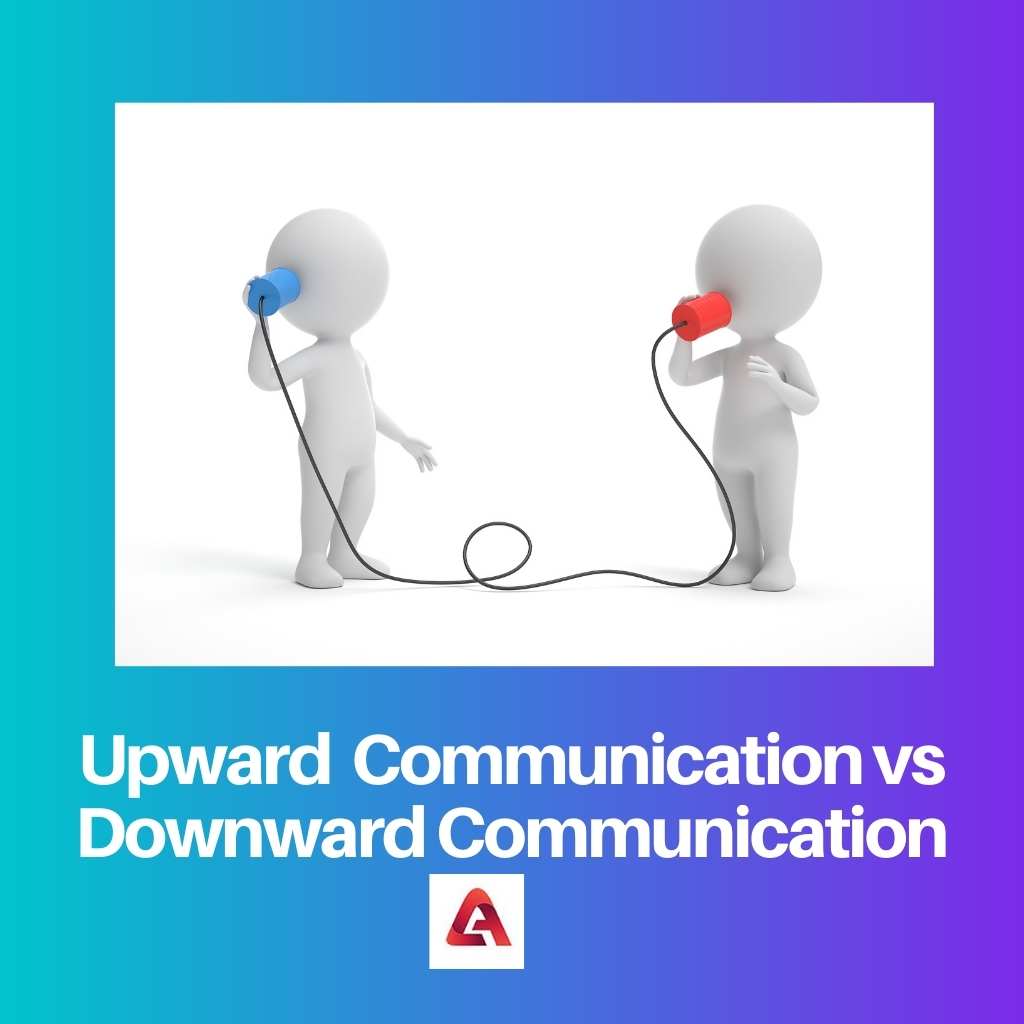Upward and Downward communication are two types of communication that can occur internally in any organization.
These are the two types of communication that differ by the way they travel from one person to another. They travel from lower to upper authority and vice versa.
Upward communication is when the communication travel from a lower level of authority to a higher level of authority. They mainly mean that when the information travel from a person lower in a hierarchy of an organization to a higher level of hierarchy.
Downward communication is when the communication travel from a higher level of authority to a lower level of authority.
They mainly mean that the information travel from a person high in the hierarchy of an organization to the lower level of hierarchy.
Key Takeaways
- Upward communication flows from subordinates to supervisors or managers, while downward communication moves from higher-level positions to lower-level employees.
- Upward communication provides feedback and suggestions, whereas downward communication conveys instructions and company policies.
- Downward communication tends to be more formal and authoritative, while upward communication encourages employee involvement and empowerment.
Upward Communication vs Downward Communication
Downward communication takes place through formal channels such as meetings, emails, memos, reports, and presentations. Upward communication takes place through both formal and informal channels, such as suggestion boxes, open-door policies, face-to-face, and interactions.

Upward communication is a form of chain where the information travel, for example, from a clerk or worker to the head of the organization, for example, CEO or Chairman.
The transfer of information from a clerk to its manager in a higher post forms an example of Upward communication.
Downward communication is a form of chain where the information travels, for example, from a higher authority or head of the organization to lower-level workers or clerks.
The transfer of information from a manager to its clerk, for example, is also Downward communication.
Comparison Table
| Parameters of Comparison | Upward Communication | Downward Communication |
|---|---|---|
| Pathway | The path of communication is from bottom to top. | The path of communication is from top to bottom. |
| Information | The information in this type of communication are mainly related to working progress, report, problem, requests, suggestion, etc. | The information in this type of communication is mainly related to instructions, strategies, clarifications, targets, etc. |
| Efficiency | This type of communication is less frequent and efficient when compared | This type of communication is more frequent and is also more efficient |
| Speaker | The speaker of this communication is mainly the workers in a lower tier in the hierarchy of an organization | The speaker of this communication is primarily the people in higher positions in the hierarchy of an organization |
| Forms | These types of communications are done mainly through emails, reports, suggestion boxes, meetings, etc. | These kinds of communications are done mainly through circulars, notices, meetings etc. |
What is Upward Communication?
In an organization, the communication which takes place in a reverse hierarchical manner falls under the category of Upward communication.
In this form of communication, the information travels upward in the ladder of the hierarchy of an organization. This is a slow process of communication usually.
In an organization, communication is important between employees and employers. Upward communication fills up the gap in between.
This communication helps the employees to send their requirements, needs, suggestions. Through this process, they send their information to higher or senior authorities.
Upward communication plays an important role in recording the performance of a worker. In recent times this type of communication is seen to grow more and at increased speed as well.
They help in the empowerment of a worker in any and every organization. The growth of an organization comes from its employee in many possible ways.
They help in acknowledging all the employees, their works and their contribution to the organization. This communication also keeps all the employees in decorum, engaged and active with the organization in this new hectic world.

What is Downward Communication?
In an organization, the communication which hierarchically takes place falls under the category of Downward communication.
In this form of communication, the information travels downward in the ladder of the hierarchy of an organization. This is a very fast process of communication.
The instruction of a head person in an organization plays a very vital role. They keep the organization in a line and away from a confusing situation.
This type of communication plays a role in bringing information from the higher authorities to the workers in the lower chain of the hierarchy.
Downward communication is very systematic and follows a certain form while conveyed. The superior always follow certain methods while conveying the messages.
They may use e-mails, notices, announcements, letters, meetings, etc. They are a very frequent type of communication.
The superiors very used this type of communication to convey the required information, which always helped in better work and coordination.
The main aim of this communication is to convey the main goal of an organization. They also keep employees in line and engaged.

Main Differences Between Upward Communication and Downward Communication
- In Upward communication, the information flow to a higher level in an organization. In Downward communication, the information flow to a lower level.
- Upward communication is initiated by the lower-level workers. Downward communication is initiated by the higher authorities or head person of an organization.
- Upward communication is slower, while Downward communication is faster when compared.
- Upward communication shows the participation of the workers, while Downward communication represents a more authoritative nature.
- Upward communication is common in this new era, while Downward communication is a traditional process from old times.
- Upward communication is less frequent, while Downward communication is highly frequent.

- https://www.emerald.com/insight/content/doi/10.1108/09596119610108626/full/html
- https://search.proquest.com/openview/7af48f51e144fab3d7104d71219dbcb6/1?pq-origsite=gscholar&cbl=18750
- https://www.jstor.org/stable/27768573
- https://journals.aom.org/doi/abs/10.5465/255411
